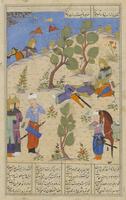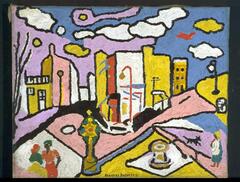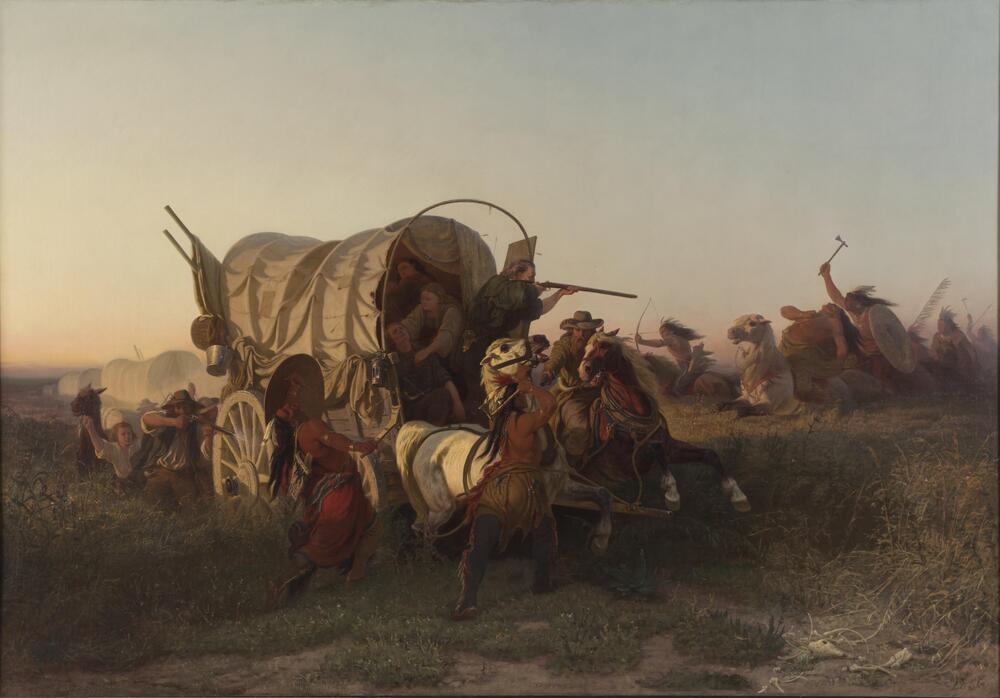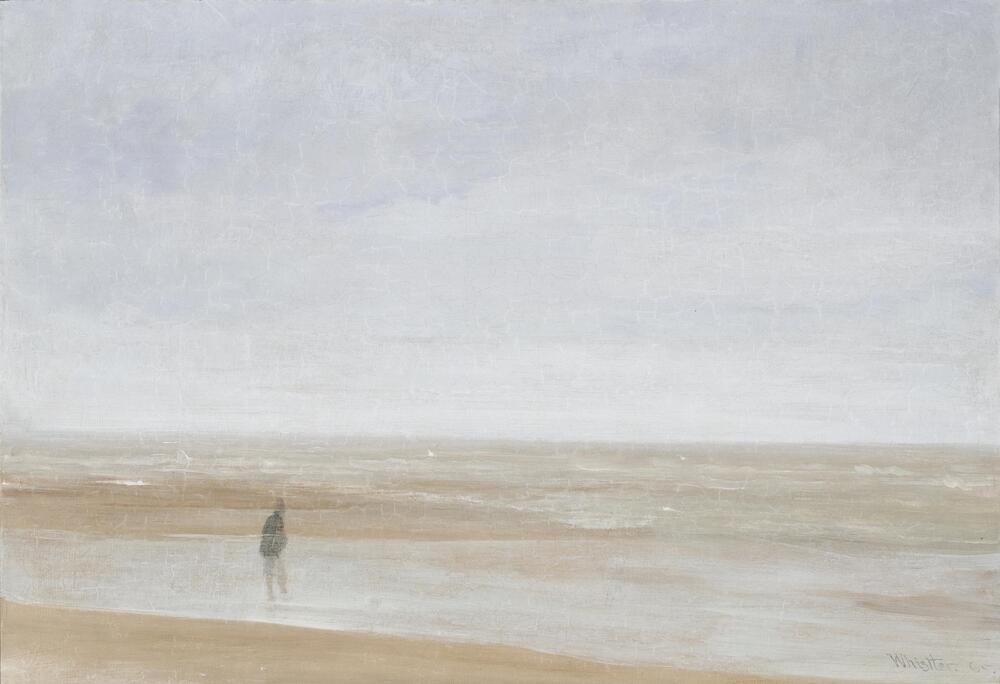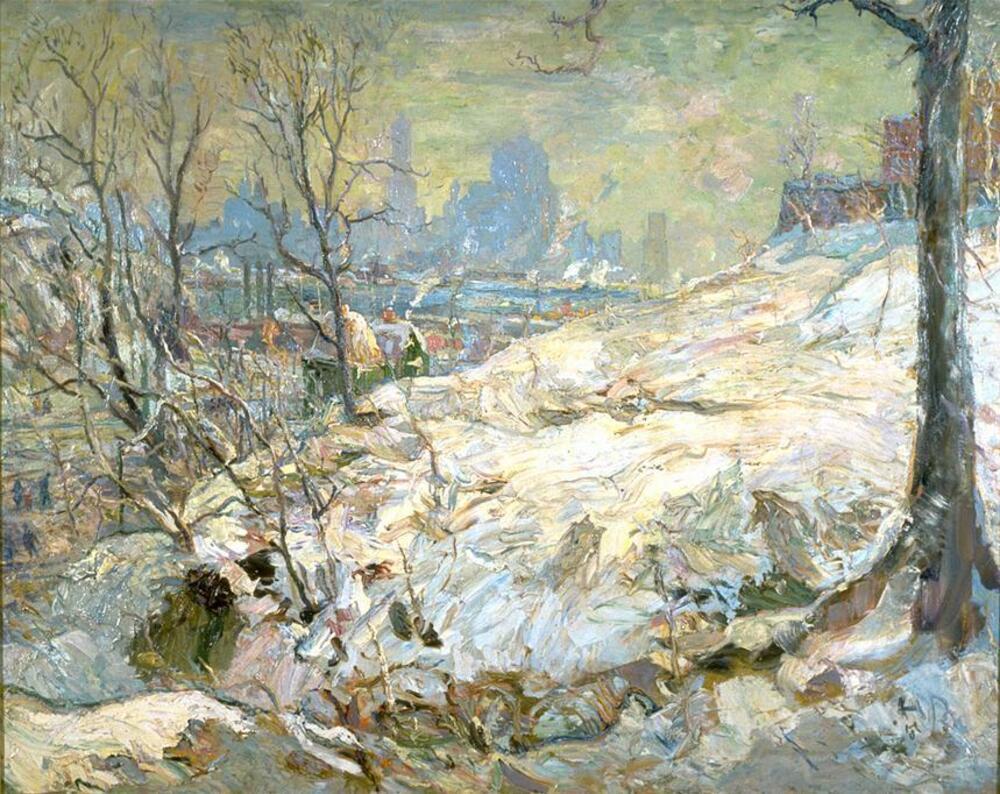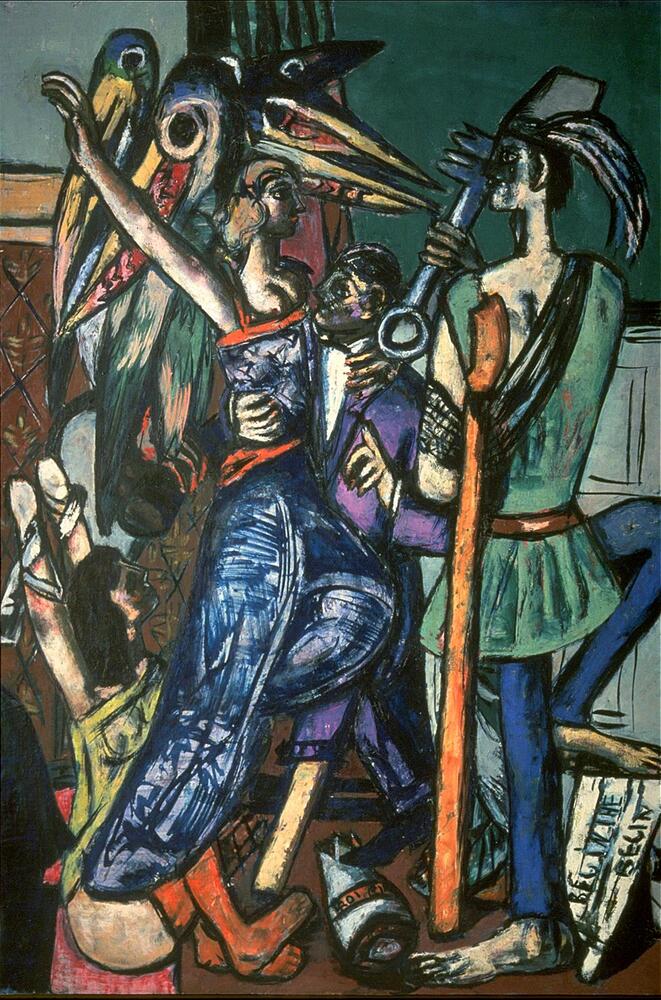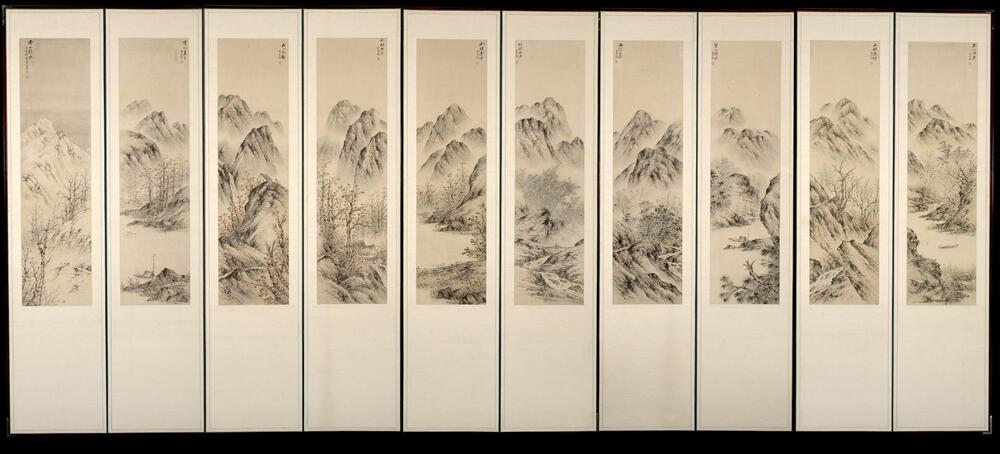High School: Inspiration
Docent Curricular Tour
Theme: What inspires artists? Associations (family, friends), historical context, social changes, peace or wartime, physical environment, awareness of the world, etc.
Stop 1: Martha Dandridge Custis Washington, Peale 1858
Themes: role of women, identity, chauvinism, discrimination
Background: Father was a famous painter of the leading figures of the American Revolution and started one of the first museums in the US (Peale Museum in Philadelphia). CW Peale did 60 portraits of George Washington.
Martha had a large impact on the outcome of the war as a support and confidant of her husband. After Washington left Mount Vernon in 1775, he would not return for over 6 years. Every year, during the long winter and when the fighting was at a standstill, the General asked Martha to come to camp. Martha was able to come to be with her husband for almost half the time he was away. Rembrandt Peale wanted to memorialize her sacrifice.
Painting: Based on a portrait of Martha by his father, this is a posthumous portrait painted in 1850. The stone oculus surrounding the sitter mirrors Peale's "porthole portraits" of George Washington, which he framed in stone to underscore the subject's monumentality and to serve as an allusion to the Roman republic, whose ideals were continually invoked by the founding fathers.
Stop 2: Attack on Emigrant Train, Wimar, 1856
Themes: racism, cultural changes, painter's growth
Background: Carl Wimar was born in Germany in 1828 and moved to St. Louis MO at age 15. Missouri was the westernmost state. It was the departure point for many wagon trains heading west. Weimar's father had a public house not far from the encampment for Indian traders. He had a particular fascination with frontiersmen and Indians. At 23, he moved back to Germany for art training. He decided to carve a niche for himself to specialize in historic landscapes of the American West. He was considered one of the great American painters of the expansion. In later years, he visited the frontier where he sketched Native Americans. The paintings were more mournful records of a vanishing race and culture.
Painting: Account of fictionalized events based on a book by French author, read by a German American, while living in Germany. Wimar relied on illustrated books.
Maifest Desitny: The idea that the obvious and inevitable future of the US is to settle the continent from coast to coast and could expel from the land anyone who laid claim to it. It was thought that it was not only the American Settler's right but their destiny to push West.
Why controversial?
Indians:
savages, bare upper bodies
brutes that kill the vulnerable
used traditional weapons but had access to rifles
doomed to extinction
Settlers:
civilized, dressed
victims, women and children
under attack, yet still shoots Indians, making us believe they will be victors
Will succeed in settling the West
Stop 3: Sea and Rain, Whistler, 1865
Themes: family influence, multi-cultural influence, experimentation, independence
Background: Born in US, his father was a railroad engineer during the great expansion and made his fortune. His father was offered a job for a new railroad in Russia. The family left when James was 11. He showed great talent early. He returned to US, failed at ministry and West Point. He was always rebellious, independent, and struggled. His art is characterized by: subtle delicacy, parallels between art and music. Earlier in career he was part of Realism movement, but then Tonalism. Most famous for a portrait of his mother.
Painting: depicts solitary male figure standing along the shore. The thin layers of paint evoke a misty overcast day with a figure standing maybe on a tidal flat. Whistler accompanied the French realist Gustave Courbet in a late summer painting campaign along the Normandy coast in Trouville. Although Whister embraced Realism, he began his own style. This work has the thin veils of paint that evoke the atmosphere along the coastline rather than minutely describe it. The presence of the man implies no narrative but is precisely placed accent in the composition. Whistler's credo of "art for art's sake" has shaped how he portrays a cloudy day at a summer retreat.
Quote: "to say of a picture, as often said in its praise, that it shows great and earnest labor, is to say that it is incomplete and unfit for view."
Stop 3.5: Winter in Weehawhen, Reuterdahl, 1907
Themes: Good fortune or hard work?
Background: Born in Sweden with no formal training, he went to Chicago to do illustrations for 1893 World's Fair. He decided to stay in US. AS good fortune would have it, President Teddy Roosevelt selected him to accompany the Great White Fleet voyage in 1907 to document the journey. He became a highly acclaimed nautical painter. He was a writer on naval topics.
Painting: Uses a light-colored palette to capture the icy chill of a winter's day in Weehawken. Impressionist style. Energized brush strokes and heavy impasto (dense layering of paint) to create a sense of immediacy and capture heaps of snow. Emphasizes atmospheric effects of winter using cool tones. Not idealized image, with city encroaching on nature.
Stop 4: Begin the Beguine, Beckman 1946
Themes: Influences of War, displacement
Background: early on, he rejected the old masters. His traumatic experiences of WWI, in which he volunteered as a medic, coincided with a dramatic transformation of his style from academically correct depictions to a distortion of both figure and space. Reflected an altered vision of himself and humanity. The day after Hitler's rain speech about degenerate art in 1937, Beckmann left Germany. After spending 10 years in Amsterdam, he received a visa for the US.
Painting: it refers to a Cole Porter song (from 1935 musical Jubilee) that had become a popular big band standard Artie Shaw's 1938 clarinet recording. The song's title can be seen at the lower left and the invocation of Cole Porter's sophistication stands in sharp contrast to the disturbing visual imagery within the composition. Distorted space, mutilated limbs, an acidic palette communicate Beckmann's ambivalence toward American culture as well as his attraction to cabaret.
Quote: there is nothing I hate more than sentimentality.
Stop 5: Untitled, Mark Bradford
Themes: Environment, race, cultural heritage, LA, self awareness, political impact
Background: worked at mother's beauty shop in West LA and made signs for it. Interested din maps. He is known of grid-like abstract paintings combining collage with paint. Landscape? LA has always served as inspiration (movie La La Land), the blinking atomized landscape and abundance of street signs, the bits of debris that find a way into his work, from post-it notes to fence advertisement.
Painting: constructs, deconstructs, found objects, commercial materials (Home Depot). Large format. 10-15 layers.
Quote: Art is Life. So to learn it, engage with life.
Stop 6: Landscape of Seasons, Yi Sang Beom, 1934
Themes: cultural heritage, family circumstances, political involvement, independence
Background: Born in Gogju, he lost his father at an early age and grew up impoverished. He enrolled at the Gyeongseong Academy of Fine Arts (Korea's first art school) since he did not have to pay tuition. Two masters of Korean painting operated the school. In 1923, Lee organized some of his fellow students into a group that began to pursue innovative new painting styles that were quite different from those of their teachers.
Yi submitted a painting, Early Winter, to the Joseon Art Exhibition, and it received a special prize. Instead of an "ideal" or "conceptual" landscape, which was tradition, Yi painted an ordinary banal landscape that originated from an actual view of the countryside. The somewhat desolate field and mountain, captured in early winter, does not look like anything special. When Yi drew an illustration of the first Korean gold medal winner in the 1938 Olympic marathon and erased the Japanese national flag, he was jailed. Korea was occupied by Japan. After the incident, he painted quite and cozy mountain villages. No more politics.
Painting: Ten-panel screen depicting similar mountain scenes over changing seasons. A spring scene begins on the right, gradually changing over the ten images to winter on the left. IN an upper corner of each scene is a corresponding seasonal poetic inscription. These images are created using ink and color on paper, which was mounted on the upper two-thirds of each panel on the screen. His western influence is shown with the use of rapid brush strokes and viewing nature in a more realistic way.
Compare with Chinese painting and older Japanese painting.
Part of 1 Learning Collection
<p>Docent Curricular Tour</p>
Created For
K-12 EducatorK-12 Student
Museum Visitor
UMMA Docent
UMMA Staff
University Faculty
University Student
Rate this Resource
AVG: 0 | Ratings: 0
& Author Notes
Creative Commons by-nc-saLast Updated
May 23, 2017 1:42 p.m.Report
Reporting Policy

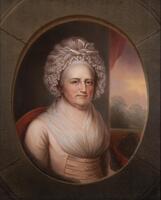
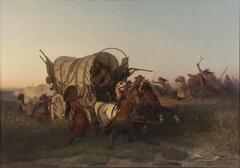
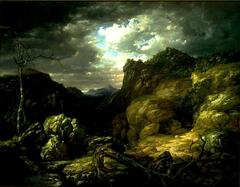
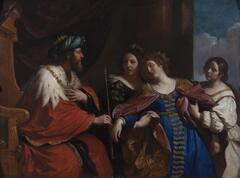

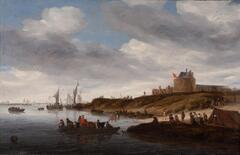

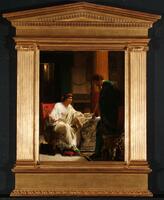
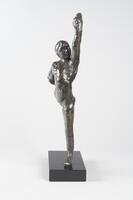
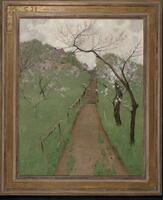
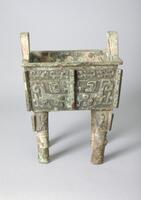
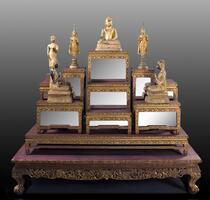
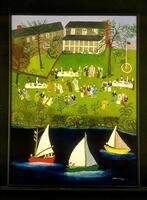
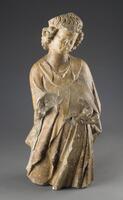
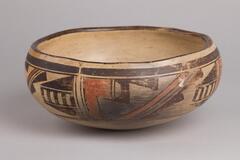
![<p>This celadon bowl is decorated with mold-impressed designs, which was one of popular type of dishes in 11th and 12th centuries. On its inner walls are lotus scroll designs, and on its inner base is what is presumed to be a lotus flower design. Glaze has been applied all the way down to the rim of the foot, which retains traces of silica supports in three places. The yellow-green glaze is evenly spread on the surface, while the clay is of specially selected high quality, producing a smooth surface.<br />
[<em>Korean Collection, University of Michigan Museum of Art</em> (2014) p.111]</p>
<br />
shallow lobed bowl with molded lotus design on wall, 6 lobes, very small foot, high quality, need cleaning <p>This celadon bowl is decorated with mold-impressed designs, which was one of popular type of dishes in 11th and 12th centuries. On its inner walls are lotus scroll designs, and on its inner base is what is presumed to be a lotus flower design. Glaze has been applied all the way down to the rim of the foot, which retains traces of silica supports in three places. The yellow-green glaze is evenly spread on the surface, while the clay is of specially selected high quality, producing a smooth surface.<br />
[<em>Korean Collection, University of Michigan Museum of Art</em> (2014) p.111]</p>
<br />
shallow lobed bowl with molded lotus design on wall, 6 lobes, very small foot, high quality, need cleaning](/media/W1siZiIsIjIwMjIvMDkvMjQvMmx1M2ptNHMzM19kZWZhdWx0LmpwZyJdLFsicCIsInRodW1iIiwiMjQweDIwMCJdXQ?sha=2ba2ecc35e4531c3)
